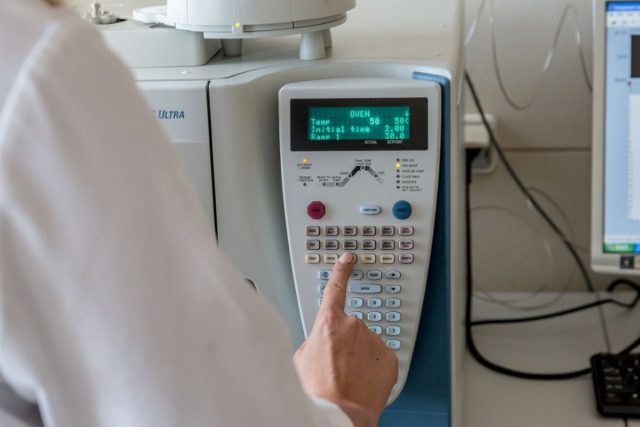Patient safety is a fundamental aspect of healthcare that demands the utmost attention. It refers to the prevention of avoidable harm to patients during their interactions with the healthcare system. While medical advancements have revolutionised the healthcare field, it is crucial to acknowledge that errors and adverse events can still occur. This is where patient safety awareness plays a pivotal role in ensuring the well-being of individuals seeking medical care. By promoting a culture of awareness and vigilance, healthcare providers, patients, and society as a whole can collaborate to mitigate risks and enhance the quality of care.
Patient safety awareness encompasses various elements that contribute to a safe healthcare environment. It starts with healthcare providers acknowledging their responsibility to prioritise patient well-being and adopting a proactive approach to risk management. This involves adhering to evidence-based guidelines, implementing standardised protocols, and continuously improving practices through ongoing education and training. By promoting a safety culture within healthcare organisations, providers can foster an environment where patient safety is paramount.

One key aspect of patient safety awareness is identifying and preventing medical errors. Mistakes can occur at any stage of the healthcare process, from diagnosis to treatment, medication administration to surgical procedures. By fostering awareness, healthcare providers can actively identify and address potential risks, implement robust systems for error reporting and analysis, and promote open communication among healthcare professionals. This culture of transparency encourages the sharing of information and learning from mistakes, ultimately leading to safer practices and improved patient outcomes.
The awareness extends beyond healthcare providers to include patients themselves. Informed and empowered patients play a vital role in their own safety. They should be encouraged to actively participate in their care, ask questions, and voice concerns. Patient engagement can help identify errors, facilitate accurate information exchange, and enable shared decision-making. By empowering patients to become active participants in their healthcare journey, the overall safety and quality of care can be significantly enhanced.
Patient education pamphlets can play a crucial role in increasing awareness. A patient pamphlet provides valuable information to them about their condition, treatment, potential risks, and preventive measures. By empowering patients with knowledge, they become active participants in their care and can make informed decisions that contribute to their safety and well-being. By integrating these pamphlets into the healthcare process, healthcare providers can bridge the knowledge gap, promote patient engagement, and further strengthen patient safety awareness efforts.
Society as a whole must also recognise the importance of it. Healthcare is a collective responsibility, and everyone has a role to play. Public awareness campaigns and educational initiatives can help foster an understanding of patient safety issues, empower individuals to advocate for their rights and promote a culture of accountability within the healthcare system. By actively engaging the public, policymakers, and stakeholders, we can collectively work towards building safer healthcare systems that prioritise patient well-being.
The impact of patient safety awareness is far-reaching. By reducing medical errors, healthcare-associated infections, and adverse events, patient safety initiatives can save lives, prevent disabilities, and minimise healthcare costs. A strong focus on patient safety also enhances trust and confidence in the healthcare system, leading to improved patient satisfaction and better healthcare outcomes.
It aligns with the ethical principles that underpin the practice of medicine. The fundamental principle of non-maleficence, or “do no harm,” serves as a guiding principle for healthcare providers. By actively prioritising patient safety, healthcare professionals uphold this principle and fulfil their ethical duty to protect their patients from harm.
Regulatory bodies and policymakers are also crucial in promoting patient safety awareness. These entities have the power to enforce regulations, set standards, and establish monitoring systems that hold healthcare organisations accountable for patient safety. By implementing robust regulatory frameworks and incentivising adherence to best practices; regulatory bodies can create a supportive environment for patient safety initiatives. Policymakers, on the other hand, can advocate for policies that prioritise patient safety, allocate resources to support awareness campaigns, and encourage collaboration between stakeholders. The collaboration between healthcare providers, patients, society, regulatory bodies, and policymakers is essential to drive meaningful change and ensure that patient safety awareness is at the core of healthcare systems worldwide.
As we move forward, we must continue to prioritise patient safety awareness as an integral part of healthcare systems. This requires ongoing education, training, and the implementation of evidence-based practices. It necessitates collaboration and open communication between healthcare providers, patients, society, regulatory bodies, and policymakers. Together, we can create a healthcare landscape that is safer, more transparent, and focused on providing the highest level of care to patients. Let us embrace it as a shared responsibility and work towards a future where patient safety is at the forefront of healthcare endeavours.





WORKOUTS
Healthy Mind
How Pets Boost Emotional Well-being
Healthy Mind
Pursuing Excellence in Healthcare
Healthy Mind
Importance of Patient Safety Awareness
Healthy Mind
Steps to Achieve a Healthier Lifestyle
Healthy Mind
Dos and Don’ts of Gardening
Healthy Mind
A Journey To Inner Beauty
Healthy Mind
Why Do I Need A Bicycle Bag